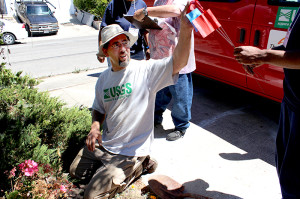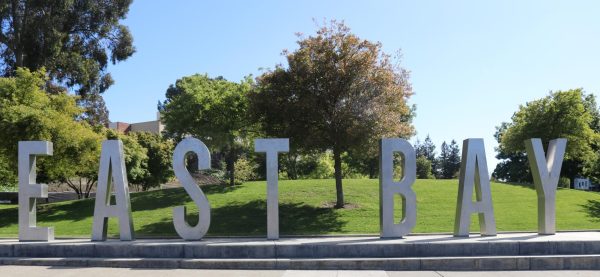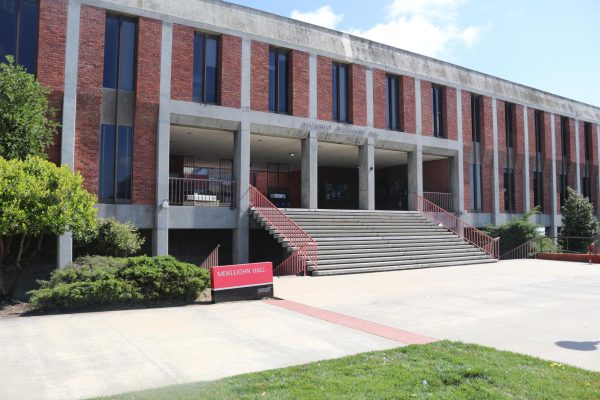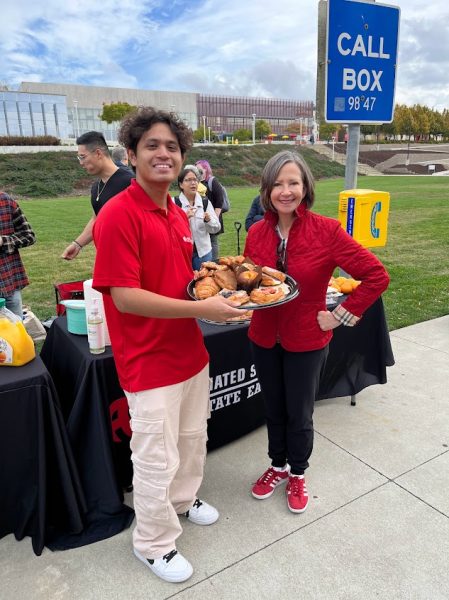Lead Scientist Explains the Science Behind Demolition
August 22, 2013

In a deserted hallway on a deserted campus, deep inside the South Science building, geophysicist Rufus Catchings spoke candidly about how he will analyze seismic waves recorded from Saturday’s demolition, and what the Warren Hall experiment he led will do for their existing seismic database throughout the Bay Area.
The East Bay Seismic Experiment will allow members of the United States Geological Survey to map the Hayward Fault’s structure in 3D, determining the width and depth and geometry of the fault and the surrounding sedimentary basin located in the lowlands. The USGS planted 600 seismographs in the ground near the Hayward Fault to collect seismic waves released by the implosion of Warren Hall.
Once all of the seismographs have been retrieved and returned to the lab, Catchings will determine which areas on the fault shook the hardest. He will plot the amplitude of the shaking of seismic waves as a function of azimuth, or the angle or distance of the waves. Then he will map the data to pinpoint exactly where the highest shaking zones are.
Catchings will then calculate the velocity of the waves as they traveled through the sediment away from the demolition and toward the seismic sensors. Determining the velocity will help identify what kind of rock is located in that area.
“As that energy hits,” he said, smacking his hands together, “you see it moving out on these sensors, it takes longer and longer and longer time. Velocity is equal to distance divided by time, so we just take that time that it takes to go a certain distance, divided by the distance, to assess the velocity of the materials.”
They will study the P-waves, S-Waves and their various components, and will make the data readily available to the public. The data will be open to further research by other scientists.
“We just don’t know where it leads us. Once we start it, we have an idea of what we’re going to look at, but then when we see something interesting we can go much further with it.”
Initial processing of the data will take about three months, he said. Further research by the USGS will take anywhere from six months to over a year.
The experiment’s budget figured out to less than $10,000, excluding salaries and overtime pay for USGS employees, many of whom worked anywhere from 16 to 20 hour days. Incorporated Research Institutions for Seismology loaned geophones and seismometers to Catchings and his team for free. The geophones use simple spring technology to pick up seismic wave intensity.
“You have a spring, moving inside of a coil which generates electricity. Depending on how strong that electricity is it tells you something about the ground shaking when converted,” Catchings said. “That reading then goes into the seismograph and it records it [in a memory chip] and stores that information; the very precise time, the amount of shaking, what type of shaking, and so forth.”
The USGS hopes the experiment can be used to improve the sensitivity of their existing network, called the CalNetwork, by seeing how well it locates the demolition.
The CalNetwork is not capable of precisely locating earthquakes because a general lack of understanding of the makeup of the Bay Area’s terrain. The current practice involves the triangulation of multiple data points to ascertain the epicenter of an earthquake. But this ignores many important variables, such as the velocity at which seismic waves travel through certain underground materials.
“If you have three sensors, and you measure the time it takes to get to each point, from that you can just about determine where it is,” said Catchings. “But that’s assuming you have uniform material. When you don’t have uniform material all over, it may get to this sensor a lot faster than it gets to that one. But it may be a lot closer to one of the other sensors.”
The USGS has a better knowledge of places where they have conducted experiments in the past. But there is a general deficit in their understanding of the depths of basins throughout the region.
“We’ve done things like this in a few places, so we have a pretty good idea, but generally all over the Bay Area, no—that’s a very daunting task, and that’s not something we’ve done,” Catchings said, though he added that it’s something they’ve been working to improve.
As a follow-up to the experiment, Catchings and his team will head out to the fault zone and try to capture a small earthquake. The data they pick up will be used to cross-reference the data they obtained from the Warren Hall experiment, and will assist in their understanding of the fault structure.
“After we finish, we have to pick up all these sensors, we can’t leave them out, so that’s going to be a daunting task in itself. And once we do that; a little rest,” said Catchings laughing.















